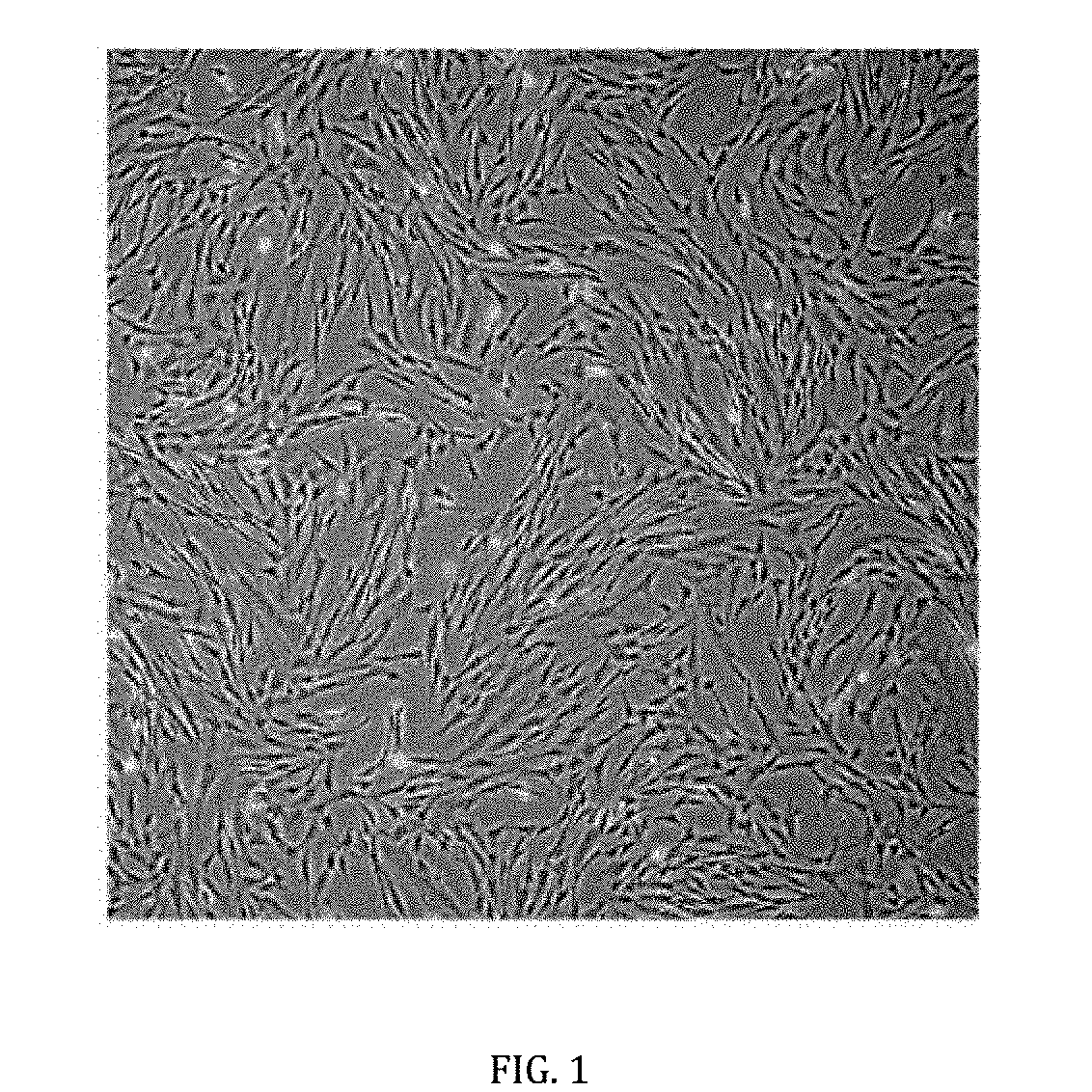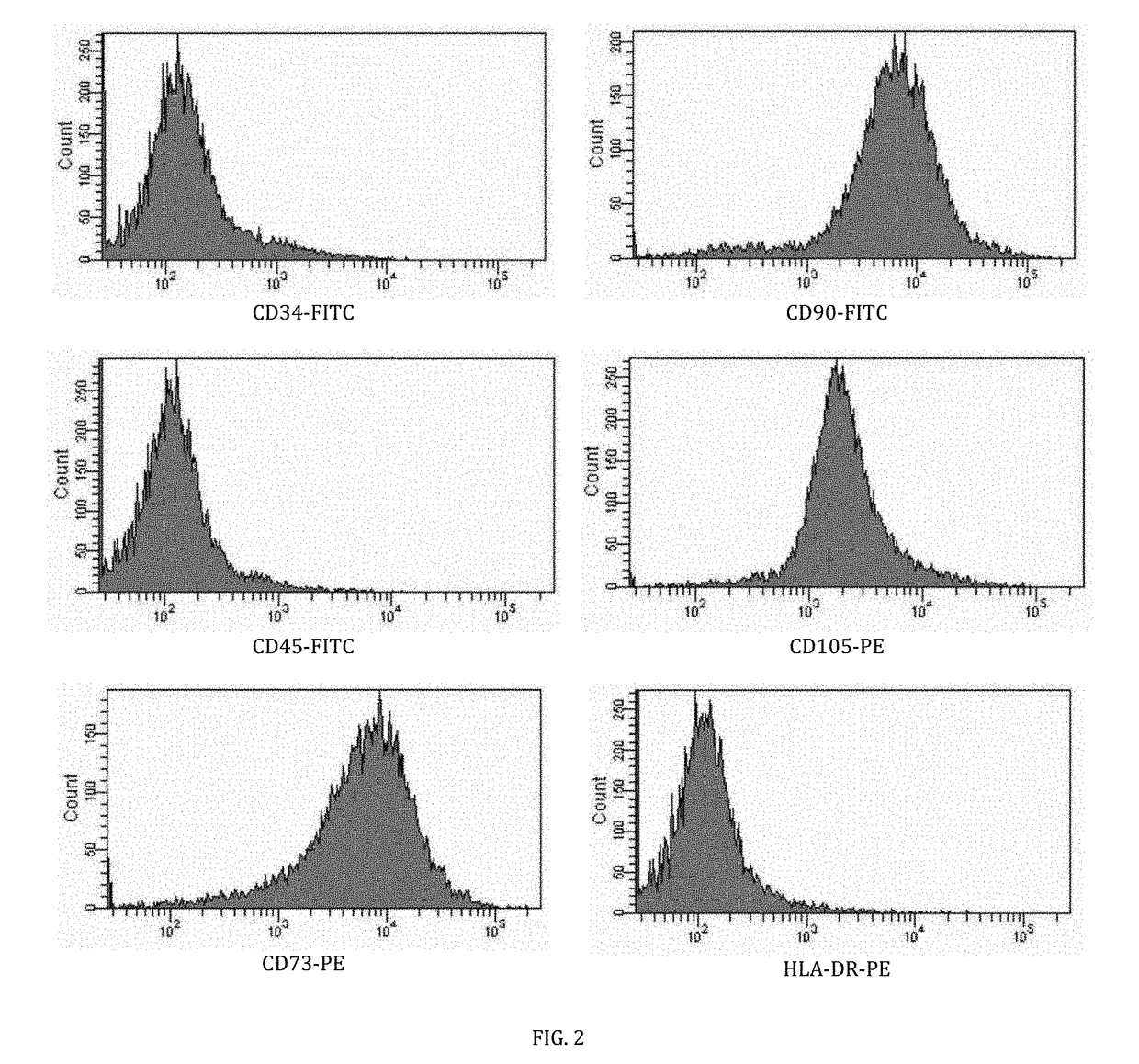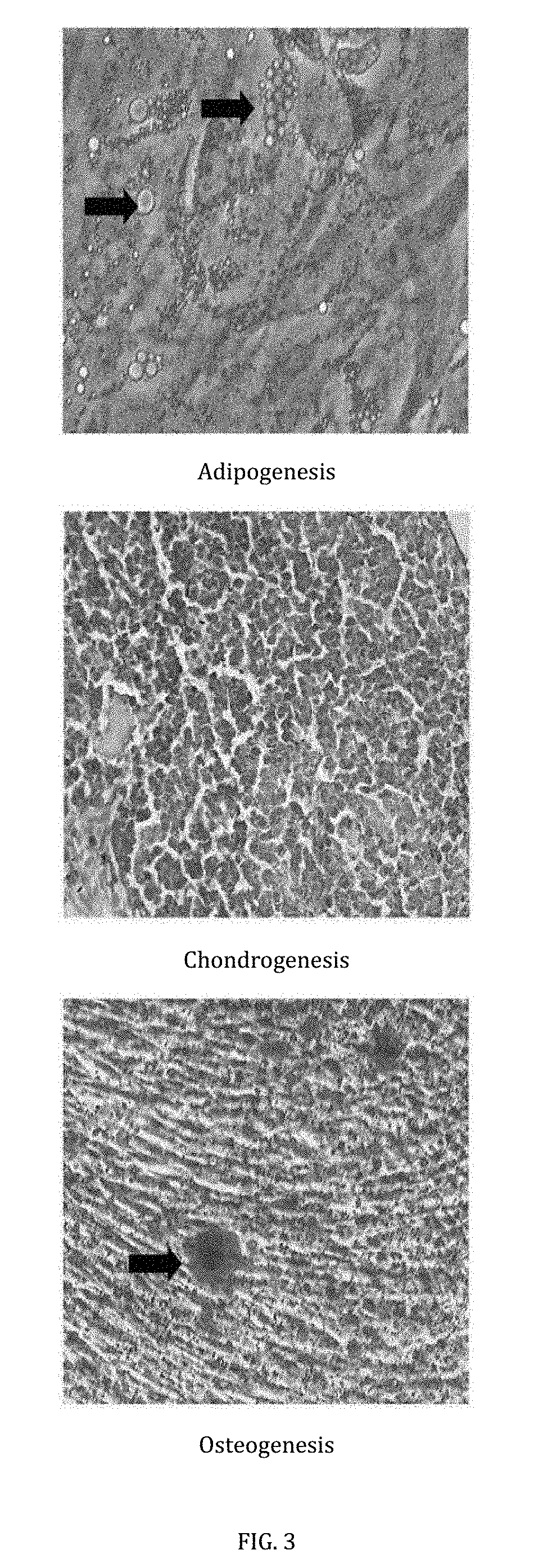Cell-based composition and use thereof for treatment of acute stroke
a cell-based composition and stroke technology, applied in the direction of unknown materials, pharmaceutical active ingredients, pharmaceutical delivery mechanisms, etc., can solve the problems of insufficient research on cell-based methods for treating acute stroke in humans, insufficient clinical trials, and inability to achieve significant improvement in overall health of patients afflicted
- Summary
- Abstract
- Description
- Claims
- Application Information
AI Technical Summary
Benefits of technology
Problems solved by technology
Method used
Image
Examples
example 1
Collection and Handling of Umbilical Cord Sample
[0031]The umbilical cord sample was detached from placenta of a donor post-birth using medical scissors and was immediately submerged in povidone iodine solution for 1-5 minutes to eliminate bacteria and to avoid any risk of contamination. Alternatively, the umbilical may be disinfected using alcohol swab. Upon disinfection, the umbilical cord was then placed in a sterile container of sterile saline solution to maintain moisture.
[0032]Subsequently, the sterile container was placed into a collection kit and was transported to laboratory using a thermo-insulated bag and kept under a temperature range from 4° C. to 37° C.
[0033]The sample was then processed within 48 hours from time of collection.
example 2
Isolation and Culture of Mesenchymal Stem Cells
[0034]First, veins and arteries of the umbilical cord were removed and followed by mincing into 1-2 mm fragments. The fragments were digested with an enzyme, preferably, but not limiting to 0.01% to 0.05% collagenase type II, for a period from 1 to 3 hours, forming a mixture. Next, a centrifugation was carried out to separate the mesenchymal stem cells from the mixture. The mesenchymal stem cells were isolated and then cultured in a growth medium, preferably, but not limiting to Dulbecco's Modified Eagle's Medium (DMEM) which may or may not contain low glucose supplemented with 5-20% animal-free serum and a combination of antibiotics comprising 100 U / mL penicillin, 100 mg / mL streptomycin, 250 ng / mL amphotericin B and 2 mM glutamine. The cultures were maintained at 37° C. in a humidified atmosphere of 5% CO2 and 95% air for 3 days. Non-adherent cells were discarded and the growth medium was replaced every 3-4 days until the cells reached...
example 3
Characterization of Mesenchymal Stem Cells
[0037]The mesenchymal stem cells were immunophenotyped at passage three using isotype (fluorescein isothiocyanate) FITC and (phycoerythrin) PE controls with antigen markers which include CD34, CD45, CD73, CD90, CD105 and HLA-DR. As shown in FIG. 2, the immunophenotyping assay results for the mesenchymal stem cells validate expression for CD73, CD90 and CD105 whilst lacking expression for CD34, CD45 and HLA-DR.
Differentiation Assay
[0038]To perform this assay, a selection of specially formulated differentiation medium were used to induce tri-differentiation ability of the mesenchymal stem cells.
[0039]Adipogenesis: The mesenchymal stem cells were treated in adipogenic differentiation medium comprising complete medium supplemented with 1 mM dexamethasone and 0.2 mM indomethacin, 0.01 mg / mL insulin and 0.5 mM 3-isobutil-l-metil-xantina. The medium was replaced every 3 days, and the differentiated cells were subjected to Oil Red O...
PUM
 Login to View More
Login to View More Abstract
Description
Claims
Application Information
 Login to View More
Login to View More - R&D
- Intellectual Property
- Life Sciences
- Materials
- Tech Scout
- Unparalleled Data Quality
- Higher Quality Content
- 60% Fewer Hallucinations
Browse by: Latest US Patents, China's latest patents, Technical Efficacy Thesaurus, Application Domain, Technology Topic, Popular Technical Reports.
© 2025 PatSnap. All rights reserved.Legal|Privacy policy|Modern Slavery Act Transparency Statement|Sitemap|About US| Contact US: help@patsnap.com



